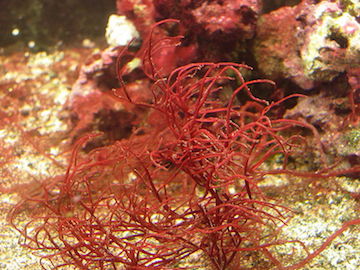400116- agar shortage.JPG

Red algae is used to make agar. Credit: Eric Moody, Wikipedia.
High school science teachers might be looking for some new lab experiments in the coming months. That’s because one of the main supplies for a classic experiment is getting both more expensive and harder to find.
Agar is the gelatin-like substance that’s layered in the bottom of petri dishes. It’s a great material for growing cultures of bacteria and fungi because it stays solid at high temperatures, it’s stronger than gelatin, and the bacteria don’t eat it.
Agar is made from a type of seaweed that’s found in cool, shallow waters around the world. The seaweed is a type of red algae. When it’s boiled, the cell walls of the algae release the agar. It’s typically dried for shipping, then reconstituted when it’s used.
Recently, demand has been growing while supplies have been shrinking. Demand is going up because agar can be used for much more than lining petri dishes. It’s used as a thickener in soup, jelly, and ice cream and other desserts. Vegetarians use it as a substitute for gelatin, which is an animal-based product. And it’s also found in laxatives and other non-food products.
Much of the world’s supply of agar comes from Morocco, where the seaweed is gathered from the beaches after storms. The Moroccan government has cut the amount that can be harvested by more than half, and limited how much can be sold to other countries.
That’s caused some companies to slow or even stop production, especially for scientific uses. So there’s less of it for hospitals, labs -- and high school classes.

